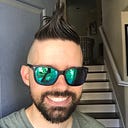Data Science Jobs
How to Not Suck at Resumes
Tips from previous interviewing and hiring experience
Your resume is a vehicle to exhibit your skills in a way that is testable. A hiring manager wants to be able to ask you questions on subjects you say you’re good at or similar ones to be able to know if they can trust the rest of your resume. Your resume helps frame the questions you will be asked; the interview itself is a sampling of your ability that the hiring manager has to generalize to your ability to function in the job role. So what are the key features of a resume?
Format
The formatting is very important. You should use a font that is easy for everyone to read, and each page should have a good amount of white space. I don’t want to look at a jumble of words. Below is the same words with more spaces:
Bolding
Each section should be clearly marked, and you should avoid bolding too manykeywords. Bolding a few words here and there will help, but every line makes the text hard read. If you’re going to bold that much, why not just use fewer words? Look at the example below, and tell me which one is easier to read:
Length
What about length? Some claim no longer than a page. If one page is unreadable, it should be longer or more concise. Usually, past a bachelor’s degree with work experience, two pages is good. Ph.D.s have C.V.s anyways, so one would expect their resume to be longer. With the internet, you could be creative with length, but two pages is a good length.
You want to say in a crisp, concise way what you did. If someone is interested in more, they will ask about anything in particular. You want to give enough evidence that you’re interesting but too much detail can make it seem like you’re trying to make more of your experiences than you should.
The Basics
Basic information like contact information should go at the top. This should include a LinkedIn profile link if you have one. If you don’t, you probably should make it. It should contain more information than your resume. Your LinkedIn profile should be an extension of your resume for when people want to know more on any particular piece. I have an example below from my LinkedIn, and I have information on here that I don’t have on my resume.
There are many preferences out there, but my checklist starts with education and skills. I like that to be up top. Education is a big part of your story. When you’re new to the job market, your degree was the longest project you’ve worked on and should have been the most challenging up until that point. Master’s degree should have the title of your thesis if you did one. Ph.D. should have the title of your dissertation and a three to five sentence abstract. A link to your thesis would work well there too.
Leave off high school. I know you may be proud, and I’m proud of my high school as well, but that information is generally trumped by later degrees. If you were valedictorian, you can put that in awards or honors.
For skills, put the most relevant categories first. For software engineer, programming languages should be first. Then in each category, the skills should be listed in decreasing ability (most experienced to least experienced). For programming, I would put Matlab, Python, C++, Bash, C.
Work Experiences / Projects
If you’re new to industry, it is okay to put class projects. A class project shouldn’t take more than two lines. Be concise. A capstone project or thesis should take a few more lines. This is what the internet is good for. You don’t have to put everything on your resume, and an interested hiring manager can look up more
Your resume is an abstract for your career.
Before submitting, make sure you spellcheck it. Make sure your mother or father or sibling or friend has read it. Your resume is an example of your work and your attention to detail, and it is particularly personal because it is about you for you to get a job. A mistake won’t be an instant red flag, but multiple mistakes look sloppy.
The challenge with a resume is that it must present well in front of multiple audiences: the recruiter, the hiring manager, and other people on the hiring committee. So work and rework your resume. Read other people’s resumes, and try to place yourself in the hiring manager’s shoes or the recruiter’s shoes.
If you like, follow me on Twitter and YouTube where I post videos espresso shots on different machines and espresso related stuff. You can also find me on LinkedIn.You can also follow me on Medium.
Abandon Ship: How a startup went under
